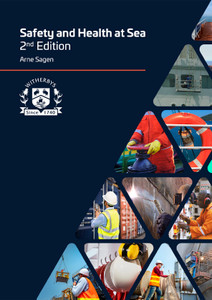
This book is designed to help build advanced navigational skills. It explains and illustrates navigational techniques using worked examples, plots, templates and exercises.
This guide is designed to help develop advanced navigational skills. It covers topics such as regulatory requirements, passage planning, bridge procedures, marine communications and ECDIS.
The information in this publication is supported by a number of worked examples, plots, templates for working and exercises. It can be used as a self-study guide to build navigational skills or as a source of reference onboard.
Navigational inaccuracies have mainly been the source of most of the catastrophic maritime disasters. The industry is heavily legislated and more regulations are likely to be developed in the near future. It is important to understand that it is the basic skills of the seafarers, especially the navigators who are the main stay of maritime safety.
There are increasing concerns about the competence and skills of seafarers, in particular the navigation watchkeepers. The training and development of seafarers is time consuming, costly and demanding. There is also the need to keep the knowledge current by staying abreast of the new developments and practices.
This book is aimed at the navigator of today and of the future. The increasing workload on the watchkeeper demands simple methods of working and, clear and concise instructions, so that the navigator can spend more time concentrating on watchkeeping. The methods of working used in the book are not just easy to follow for learning, but are also for on board applications. It contains a number of worked examples, plots, templates for working and exercises to allow the navigator to gain basic and advanced navigation skills. The book not only mentions the methods, it explains the methods.
The future of maritime safety, to a large extent, relies on advanced navigational skills. The book is aimed at Masters and senior navigation officers and would also be beneficial for the junior navigation officers as it would help them to gain knowledge and develop skills for shipboard applications, and also for future career progression.
Author’s Preface
1.
Regulatory
Requirements
2.
Passage
Planning
3.
Sailings
4.
Ocean
Routeing
5.
Bridge
Procedures
6.
Radar
Navigation
7.
Extreme
Weather
and
Navigation
8.
Celestial
Navigation
9.
Electronic
Navigation
Aids
10.
Tides
and
Tidal
Streams
11.
Marine
Communications
12.
Search
and
Rescue
at
Sea
13. Offshore Installations and Navigation
14. ECDIS and IBS
Further Exercises
Answers
Almanac Data
Glossary of Abbreviations
References
Bibliography
Index
Templates
Radar Plotting Sheet
Appendix
WPGL
WPGL titles are developed using scripts developed by technical experts that are peer reviewed within work groups. Typically, they seek to improve understanding of the regulations, recommendations and guidelines issued by Industry.
WPGL staff have significant expertise in the fields of navigation and hazardous cargoes as well as in the presentation of complex subjects in a graphic and easy to understand manner.
Captain Nadeem Anwar
Captain Nadeem Anwar is a Master Mariner and Fellow of the Nautical Institute. He areas of expertise include ballast water management, marine surveys, tanker inspections and operations and port mooring pilotage. He has also designed training courses for petroleum, chemical and liquefied gas tankers. He is currently a Senior Lecturer at Warsash Maritime School and is the author of several publications on the maritime industry.
- Number of Pages:
- 402
- ISBN:
- 9781856096270
- Binding Format:
- Hardback
- Book Height:
- 285 mm
- Book Width:
- 220 mm
- Weight:
- 2 kg
- Author:
Captain Nadeem Anwar and WPGL
- Published Date:
- August 2015
- Preview:
- Yes
- Publication Date:
- August 2015




